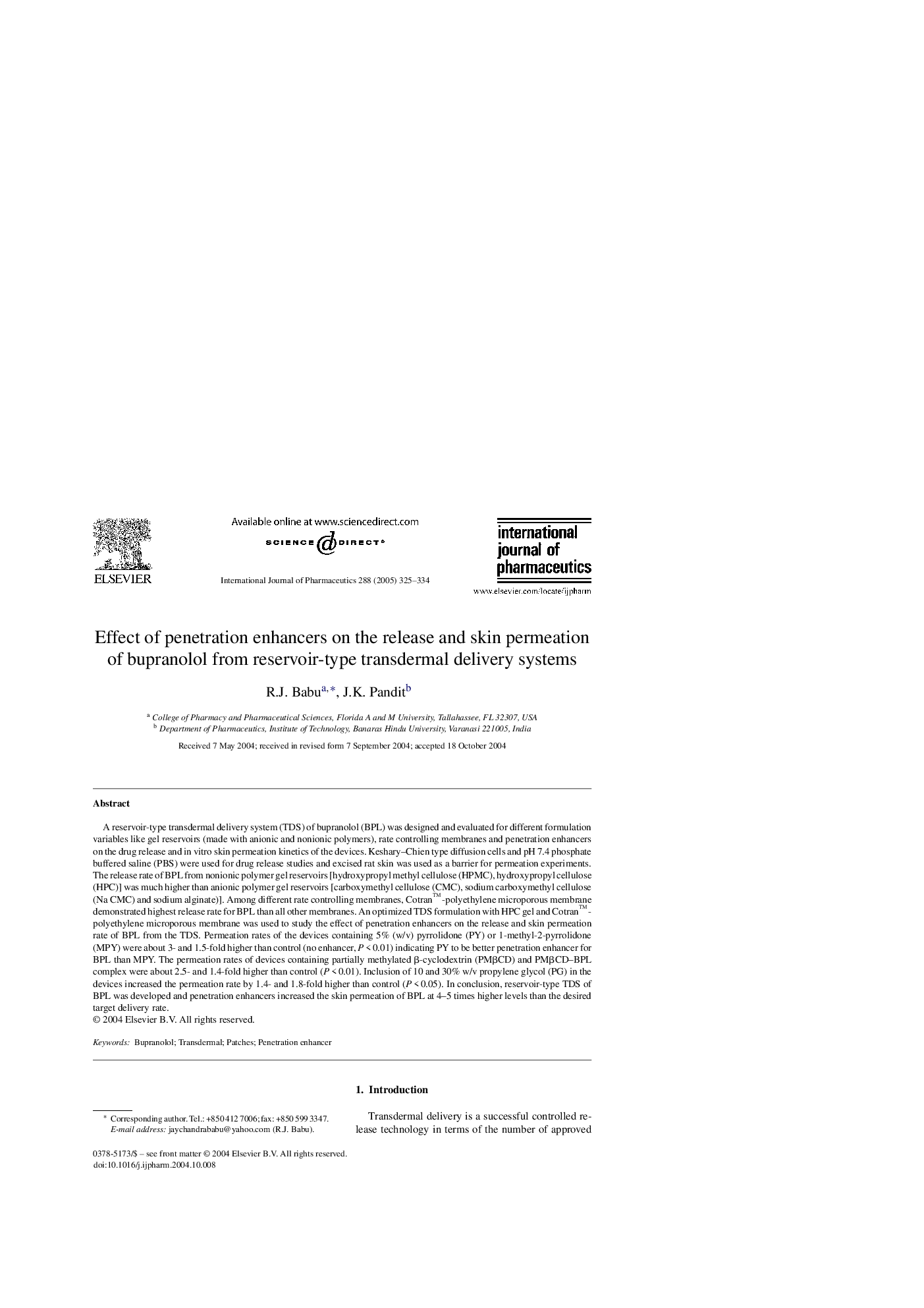| کد مقاله | کد نشریه | سال انتشار | مقاله انگلیسی | نسخه تمام متن |
|---|---|---|---|---|
| 9919002 | 1557566 | 2005 | 10 صفحه PDF | دانلود رایگان |
عنوان انگلیسی مقاله ISI
Effect of penetration enhancers on the release and skin permeation of bupranolol from reservoir-type transdermal delivery systems
دانلود مقاله + سفارش ترجمه
دانلود مقاله ISI انگلیسی
رایگان برای ایرانیان
موضوعات مرتبط
علوم پزشکی و سلامت
داروسازی، سم شناسی و علوم دارویی
علوم دارویی
پیش نمایش صفحه اول مقاله

چکیده انگلیسی
A reservoir-type transdermal delivery system (TDS) of bupranolol (BPL) was designed and evaluated for different formulation variables like gel reservoirs (made with anionic and nonionic polymers), rate controlling membranes and penetration enhancers on the drug release and in vitro skin permeation kinetics of the devices. Keshary-Chien type diffusion cells and pH 7.4 phosphate buffered saline (PBS) were used for drug release studies and excised rat skin was used as a barrier for permeation experiments. The release rate of BPL from nonionic polymer gel reservoirs [hydroxypropyl methyl cellulose (HPMC), hydroxypropyl cellulose (HPC)] was much higher than anionic polymer gel reservoirs [carboxymethyl cellulose (CMC), sodium carboxymethyl cellulose (Na CMC) and sodium alginate)]. Among different rate controlling membranes, Cotranâ¢-polyethylene microporous membrane demonstrated highest release rate for BPL than all other membranes. An optimized TDS formulation with HPC gel and Cotranâ¢-polyethylene microporous membrane was used to study the effect of penetration enhancers on the release and skin permeation rate of BPL from the TDS. Permeation rates of the devices containing 5% (w/v) pyrrolidone (PY) or 1-methyl-2-pyrrolidone (MPY) were about 3- and 1.5-fold higher than control (no enhancer, P < 0.01) indicating PY to be better penetration enhancer for BPL than MPY. The permeation rates of devices containing partially methylated β-cyclodextrin (PMβCD) and PMβCD-BPL complex were about 2.5- and 1.4-fold higher than control (P < 0.01). Inclusion of 10 and 30% w/v propylene glycol (PG) in the devices increased the permeation rate by 1.4- and 1.8-fold higher than control (P < 0.05). In conclusion, reservoir-type TDS of BPL was developed and penetration enhancers increased the skin permeation of BPL at 4-5 times higher levels than the desired target delivery rate.
ناشر
Database: Elsevier - ScienceDirect (ساینس دایرکت)
Journal: International Journal of Pharmaceutics - Volume 288, Issue 2, 20 January 2005, Pages 325-334
Journal: International Journal of Pharmaceutics - Volume 288, Issue 2, 20 January 2005, Pages 325-334
نویسندگان
R.J. Babu, J.K. Pandit,